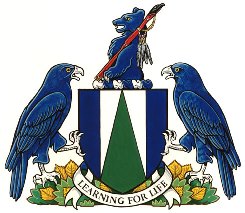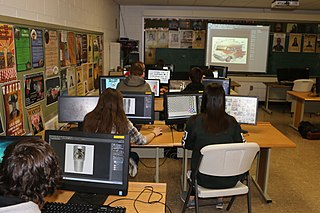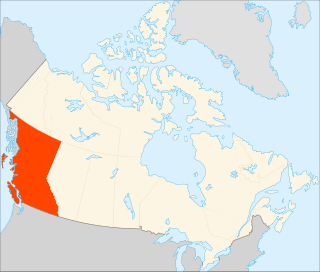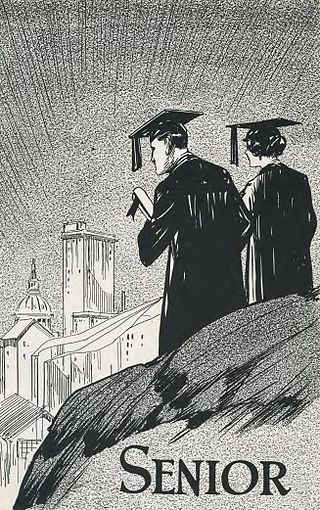Related Research Articles

A CEGEP is a publicly funded college providing technical, academic, vocational or a mix of programs; they are exclusive to the province of Quebec's education system. A loanword from French, it originates from the French acronym for collège d'enseignement général et professionnel, sometimes known in English as a "General and Vocational College"—it is now considered a word in itself.

Education in Canada is for the most part provided publicly, funded and overseen by federal, provincial, and local governments. Education is within provincial jurisdiction and the curriculum is overseen by the province. Education in Canada is generally divided into primary education, followed by secondary education and post-secondary. Education in both English and French is available in most places across Canada. Canada has a large number of universities, almost all of which are publicly funded. Established in 1663, Université Laval is the oldest post-secondary institution in Canada. The largest university is the University of Toronto with over 85,000 students. Four universities are regularly ranked among the top 100 world-wide, namely University of Toronto, University of British Columbia, McGill University, and McMaster University, with a total of 18 universities ranked in the top 500 worldwide.
A junior college is a type of post-secondary institution that offers vocational and academic training that is designed to prepare students for either skilled trades and technical occupations or support roles in professions such as engineering, accountancy, business administration, nursing, medicine, architecture, and criminology. Often times, those types of colleges offer 2-year associate's degrees that are intended for students that want to later transfer to a 4-year bachelor's degree to finish their undergraduate education, pending a C or better average in all coursework attempted, depending on the country. Students typically attend those types of colleges for 1-3 years, which is also dependent on the country.

Athabasca University (AU) is a Canadian public university that primarily operates through online distance education. Founded in 1970, it is one of four comprehensive academic and research universities in Alberta, and was the first Canadian university to specialize in distance education.

Twelfth grade is the twelfth year of formal or compulsory education. It is typically the final year of secondary school and K–12 in most parts of the world. Students in twelfth grade are usually 17–18 years old. Some countries have a thirteenth grade, while other countries do not have a 12th grade/year at all.
University admission or college admission is the process through which students enter tertiary education at universities and colleges. Systems vary widely from country to country, and sometimes from institution to institution.
An undergraduate degree is a colloquial term for an academic degree earned by a person who has completed undergraduate courses. In the United States, it is usually offered at an institution of higher education, such as a college or university. The most common type of these undergraduate degrees are associate degree and bachelor's degree. Bachelor's degree typically takes at least three or four years to complete. In some other educational systems, undergraduate education is post-secondary education up to the level of a master's degree; this is the case for some science courses in Britain and some long-cycle medicine courses in other European countries. These degrees can be categorised as basic or first professional degrees.

Kuwait University is a public university located in Kuwait City, Kuwait.
College transfer is the anticipated movement students consider between education providers and the related institutional processes supporting those secondary and post-secondary learners who actually do move with completed coursework or training that may be applicable to a degree pathway and published requirements.
Transfer credit, credit transfer, and advanced standing are the terms used by colleges and universities for the procedure of granting credit to a student for educational experiences or courses undertaken at another institution. This is a subset of recognition of prior learning.
A part-time student is a non-traditional student who pursues higher education, typically after reaching adulthood, while living off-campus, and possessing responsibilities related to family and/or employment. Part-time student status is based on taking fewer course credits in a semester than full-time students. Part-time students may choose to pursue part-time studies for a variety of different reasons. A benefit of pursuing higher education as a part-time student is the opportunity to be able to balance learning with work, family and other personal commitments. Not every program will have the option for part-time students to enroll. The selection of programs that are available in a part-time format will vary depending on the institution.
A bridge program is a partnership in Canada between two post-secondary institutions that allows students to transfer college credits from one institution to another. A bridge program student typically holds a two-year college degree and wants to obtain a four-year or graduate degree.

Higher education in Ontario includes postsecondary education and skills training regulated by the Ministry of Colleges and Universities and provided by universities, colleges of applied arts and technology, and private career colleges. The current minister is Jill Dunlop who was appointed in June 2021. The ministry administers laws covering 22 public universities, 24 public colleges, 17 privately funded religious universities, and over 500 private career colleges. 18 of the top 50 research universities in Canada are in Ontario.

Higher education in Canada includes provincial, territorial, Indigenous and military higher education systems. The ideal objective of Canadian higher education is to offer every Canadian the opportunity to acquire the skills and knowledge necessary to realize their utmost potential. It aspires to cultivate a world-class workforce, enhance the employment rate of Canadians, and safeguard Canada's enduring prosperity. Higher education programs are intricately designed with the perspective of the learner in focus, striving to mitigate risks and assure definite outcomes.

Newfoundland and Labrador has had the same growing pains as other provinces in developing its own form of education and now boasts a very strong, although relatively small, system. The direction of Newfoundland and Labrador's policy has evolved rapidly since the late 1990s, with increased funding, participation rates, accessibility and transferability. Many of the directives the government has been acting upon in the past 10 years have been a result of recommendations that stemmed from a 2005 white paper: Foundation for Success: White Paper on Public Post-Secondary Education. It set the course for furthering the strategic directives of the provincial post-secondary education sector. Some of its recommendations aimed to:

Higher education in Alberta refers to the post secondary education system for the province of Alberta. The Ministry of Advanced Education in Alberta oversees educational delivery through universities, publicly funded colleges, technical institutions, and private colleges. These institutions offer a variety of academic and vocational pursuits. Students have access to post-secondary options through most regions of Alberta, and a developed articulation system allows for increased student mobility.

Higher education in British Columbia is delivered by 25 publicly funded institutions that are composed of eleven universities, eleven colleges, and three institutes. This is in addition to three private universities, five private colleges, and six theological colleges. There are also an extensive number of private career institutes and colleges. Over 297,000 students were enrolled in post-secondary institutions in British Columbia in the 2019-2020 academic year.

Higher education in Nunavut allows residents of this Canadian Arctic territory access to specialized training provided at post-secondary institutions. There are some unique challenges faced by students wishing to pursue advanced training in Nunavut, a vast territory stretching across Arctic Canada from Hudsons Bay to the north pole. The territory was split from the Northwest Territories in 1999, following a successful plebiscite which affirmed Inuit desires to establish an independent political jurisdiction. Covering one-fifth of Canada's area and over 60% of its coastlines, the territory had a population of 31,153 in 2010.

The term senior, in regard to education, has different meanings depending on the country.
A high school diploma is a diploma awarded upon graduation of high school. A high school diploma is awarded after completion of courses of studies lasting four years, typically from grade 9 to grade 12. It is the school leaving qualification in the United States and Canada.
References
- ↑ "Legal, Ethical and Privacy Issues Affecting Data Sharing Among Ontario's Higher Education Institutions in Interinstitutional Collaboration". College Quarterly. Paula Green and Brian Baumal. Volume 22 • Issue 2 (2019)
- ↑ Glen A. Jones. Higher Education in Canada: Different Systems, Different Perspectives . Routledge; 25 June 2012. ISBN 978-1-136-60121-7. p. 86, 90.
- ↑ "Governing Post-Secondary Education and Skills in Canada". The Conference Board of Canada. page 29.
- ↑ Alberta Council on Admissions and Transfer (ACAT) "About ACAT" retrieved July 24, 2008, http://www.acat.gov.ab.ca/acat_information/acat_information.htm
- ↑ "From My Perspective – A new grading system". The Voice, December 18, 2002, Debbie Jabbour
- ↑ "Transferring credits between college and university can be rocky". Maclean's, by Louise Brown, Nov 28, 2016